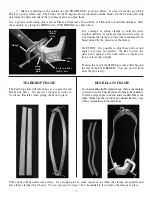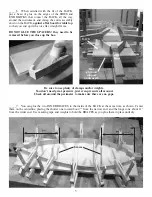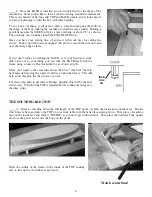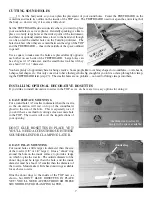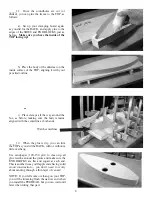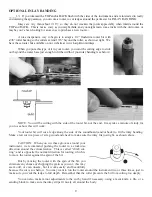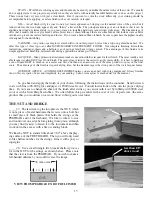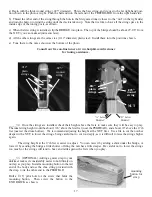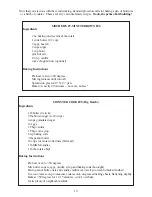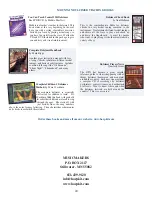
_____8. Once the BACK is installed, you can trim it down to the shape of the
instrument. Some people like to leave a small overhang around the instrument.
This is one benefit of having solid TOP and BACK panels, and it looks nice if
you are not planning to trim the box with inlay banding.
To cut a nice overhang, you’ll need to draw a smooth cutting line that follows
the shape of the body, making the overhang even all the way around. Holding a
pencil flat against the SIDES will give a nice overhang of about 1/8”, as shown.
The overhang can continue around the END BLOCKS too.
Once you have your cutting line, a band saw will work best for cutting the
curves. Follow up with coarse sandpaper (80 grit) to smooth the cut and round
over the sharp edges a little.
If you don’t want an overhanging BACK, or if your band saw work
didn’t turn out to your liking, you can trim the BACK flush with the
frame using a router with a flush-trim bit, as shown at right.
Move your router in the same direction as the bit to “climb cut” the thin
back material (moving the router clockwise around the frame). This will
help avoid chipping the the wood as you cut.
For those who plan to decorate with inlay banding, this will be the first
router step. Wait until the TOP is installed before routing the ledges for
the inlay strips.
THE SOUNDBOARD (TOP)
_____9. Draw a centerline down the full length of the TOP panel, on both the inside and outside faces. Decide
which face is best, and place the TOP on your work table with the better face aiming down. Put a piece of masking
tape on the inside face and mark it “INSIDE” so you don’t get confused later. Then place the dulcimer body upside
down on the panel and center the body on the panel.
Draw the outline of the frame on the inside of the TOP, making
sure to line up the centerlines at each end.
flush
trim
bit
Match centerlines!
6



